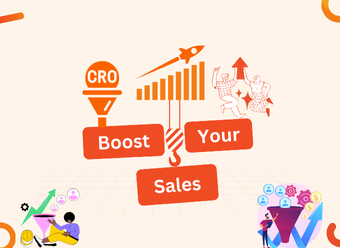In 2025, running an e-commerce store isn’t just about getting traffic—it’s about turning visitors into buyers.
That’s where eCommerce Conversion Rate Optimization (CRO) comes in. CRO is all about making small changes to your website, product pages, and checkout process to increase sales.
If you run an online store, getting Whether you are new or an experienced seller, you will find useful tips.
You can use these tips right away to turn more visitors into paying customers.
Visitors is only half the battle. The real challenge is turning those visitors into paying customers.

CRO is all about making small but smart changes to your website that help more people complete a purchase.
This could mean improving your product pages, speeding up your site, or making the checkout process easier. This e-commerce mistakes to avoid for better conversions for all online store owners.
When done right, CRO helps increase sales without spending more on ads.
Instead of just bringing in more traffic, you make better use of the visitors you already have.
Why CRO Matters for Sales & Revenue
A high conversion rate means more sales with the same amount of traffic.
Imagine you have 10,000 visitors a month, but only 2% buy something.
If you improve that rate to 4%, you double your sales without increasing your ad spend.
That’s why CRO is one of the best ways to grow an eCommerce business.
It also lowers customer acquisition costs (CAC).
Instead of constantly paying for new visitors, you make more money from the ones already on your site.
This leads to higher profit margins, better ROI, and long-term business growth.
Why CRO is Crucial in 2025
The eCommerce world is changing fast. In 2025, businesses that don’t focus on user experience (UX) and website performance will fall behind.
Here’s why:
- Online shoppers are more impatient – If your website is slow, they’ll leave.
- Mobile shopping is bigger than ever – Your site must be easy to use on a phone.
- Trust matters more – Buyers check reviews, security badges, and return policies before purchasing.
- Personalization is key – People expect product recommendations based on their interests.
With rising competition, online stores must work harder to convert visitors into customers. That’s why CRO is no longer optional—it’s a must.
CRO & Australian eCommerce Trends
In Australia, online shopping is booming. According to recent stats, over 80% of Aussies shop online.
But they also have high expectations. Here’s what matters to them:
- Fast delivery & easy returns – They want quick shipping and hassle-free refunds.
- Secure payments – They prefer well-known options like PayPal, Afterpay, and Apple Pay.
- Sustainable shopping – More buyers choose eco-friendly brands.
- Better mobile experience – Over 60% of eCommerce sales now come from mobile devices.
For Australian businesses, CRO is the key to standing out.
Here’s a bar chart visualizing key CRO & Australian eCommerce Trends based on consumer expectations:
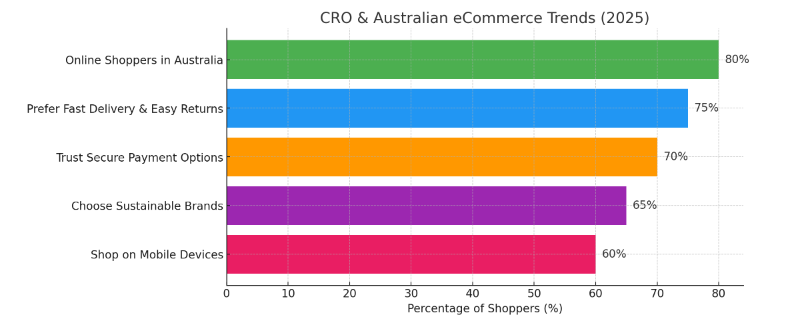
See how CRO and Australian eCommerce are growing! By 2025, both are set to rise, helping businesses boost sales and conversions.
If your site is fast, user-friendly, and optimized for trust, you’ll win more customers and boost revenue in 2025 and beyond.
What You’ll Learn in This Guide
This blog will break down proven, data-backed strategies to help you boost conversions and skyrocket your revenue.
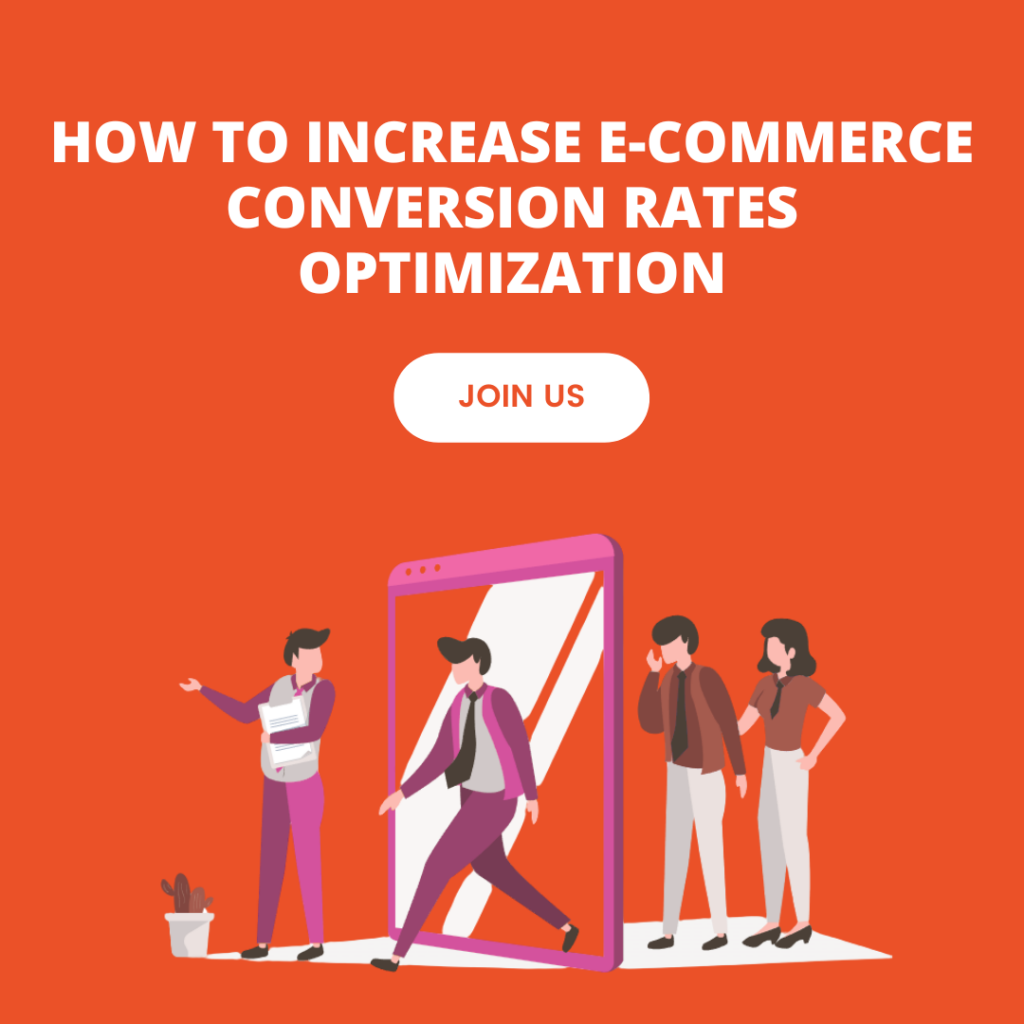
Join forces with experts to boost your e-commerce conversions and grow your business.
Whether you are new or experienced in selling, you will find helpful tips.
These tips can assist you in converting visitors into paying customers.
Let’s dive in!
1. Mastering E-Commerce Conversion Rate Optimization (CRO)
What is CRO?
Conversion Rate Optimization (CRO) is the process of getting more visitors to act on your website.
This could mean buying a product, signing up for a newsletter, or adding items to the cart.
Instead of spending more money on ads, CRO helps you make the most of your existing traffic.
Think of it like this: If 100 people visit your store and 3 make a purchase, your conversion rate is 3%.
CRO is about making small changes to improve that number, so more visitors turn into buyers.
Why CRO is More Important Than Ever in 2025
The e-commerce world is changing fast. If you don’t optimize your store, you’ll lose sales.
Here’s why CRO matters even more now:
- Consumer Behavior Has Shifted – Shoppers are more impatient than ever. They want fast websites, easy checkouts, and personalized experiences.
- Ad Costs Keep Rising – Getting traffic is expensive. Without a strong conversion rate, you’ll burn money on ads without results.
- Competition is Fierce – More businesses are selling online. If your store doesn’t stand out, customers will buy from someone else.
- Trust is Everything – People won’t buy if your store looks unprofessional, has slow load times, or lacks social proof.
How to Calculate Your Conversion Rate
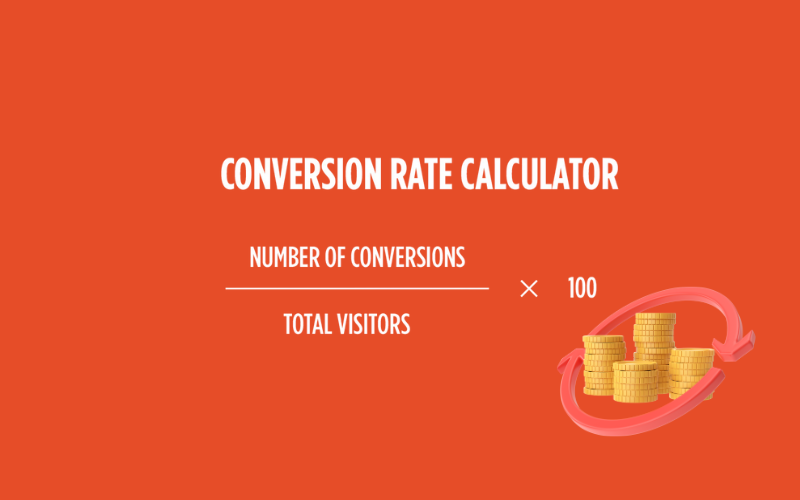
Learn how to calculate your e-commerce conversion rate with this simple formula.
Your conversion rate is the percentage of visitors who take a desired action.
The formula is simple:
Conversion Rate (%) = (Total Conversions / Total Visitors) × 100
For example, if 500 people visit your site and 25 make a purchase:
(25 ÷ 500) × 100 = 5% Conversion Rate
Industry Benchmarks for E-Commerce
- Fashion & Apparel: 1.5% – 3%
- Health & Beauty: 2% – 4%
- Electronics: 1% – 2.5%
- Home & Furniture: 1% – 3%
If your conversion rate is lower than the industry average, it’s time to optimize your store and boost your sales. Keep reading to learn how!
Industry Benchmarks for Australia’s E-Commerce Sector
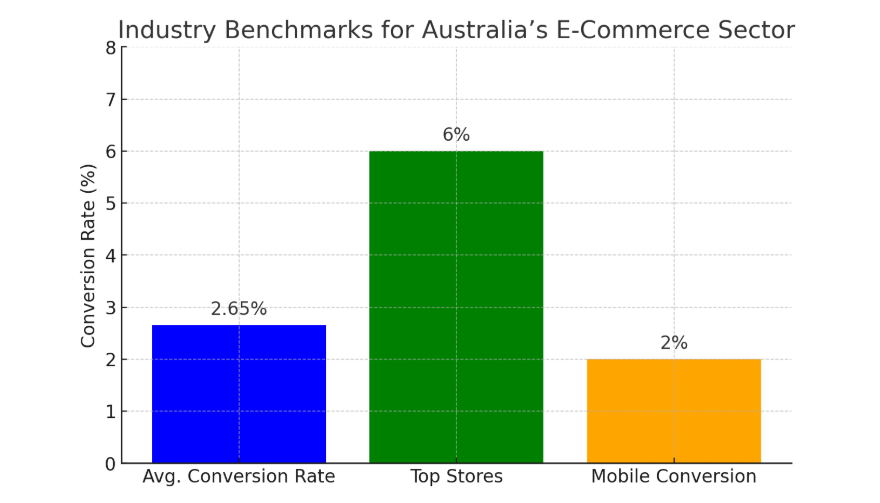
Every industry has different conversion rates. In Australia, eCommerce stores usually see:
✅ Average conversion rate: 1.8% – 3.5%
✅ Top-performing stores: 5% – 7%
✅ Mobile conversion rates: Lower than desktop, around 1.5% – 2.5%
Why do these numbers matter?
If your store has a conversion rate below 2%, you may be losing sales because of slow speed, poor design, or complicated checkout processes.
Optimizing your store can help you get more sales without spending more on marketing.
2. The Top Reasons Why Your E-Commerce Store Has Low Conversion Rates
If visitors are coming to your store but not buying, something is wrong.
Let’s break down the biggest reasons why your conversion rate is low and how to fix them.
Please avoid common e-commerce blunders that hurt revenue
Slow Website Speed & Poor Mobile Experience
People hate waiting. If your site takes more than 3 seconds to load, visitors will leave. Slow speed kills sales.
How to Fix It:
- Use fast, lightweight themes and clean up unnecessary code.
- Compress images and use a content delivery network (CDN).
- Upgrade to a better hosting provider for faster performance.
Also, make sure your site looks and works great on mobile. Over 60% of online shoppers use their phones, so if your site is clunky, you’ll lose sales.
Mobile-First CRO Strategies: Optimizing for Australian Mobile Shoppers
In Australia, most online purchases happen on mobile. If your site isn’t mobile-friendly, you’re losing sales.
✔ Fast-loading mobile pages – Speed matters.
✔ Easy tap-to-buy buttons – No tiny, hard-to-click links.
✔ One-click payment options – Apple Pay, Google Pay, Afterpay.
🔹 How to Do It:
- Use Google’s Mobile-Friendly Test to check your site.
- Make sure buttons & fonts are large enough for mobile screens.
- Keep forms short and easy to fill out.
Weak Product Pages & Unconvincing Copy
Your product page is where the magic happens. If it lacks details, has poor images, or doesn’t answer buyer questions, visitors won’t convert.
How to Fix It:
- Write clear, benefit-driven product descriptions.
- Use high-quality images from multiple angles.
- Add videos and GIFs to show how products work.
- Highlight unique selling points (USPs) to stand out from competitors.
Complicated or Long Checkout Process
If checking out is a headache, people will leave. The more steps, the higher the cart abandonment rate.
How to Fix It:
- Enable guest checkout (don’t force account creation).
- Reduce form fields—ask for only what’s necessary.
- Offer multiple payment options (credit cards, PayPal, Apple Pay, etc.).
- Show progress indicators so customers know how many steps remain.
Lack of Trust Signals
People won’t buy if they don’t trust your store. If your site looks shady or has no reviews, visitors will hesitate.
How to Fix It:
- Show real customer reviews and testimonials.
- Display security badges (SSL, payment security, money-back guarantee).
- Have clear refund and return policies.
- Improve customer support—offer live chat for quick responses.
Poor Ad Traffic & Landing Page Mismatch
Are you running ads but getting zero sales? The problem might be wrong audience targeting or a bad landing page.
How to Fix It:
- Make sure your ad messaging matches your landing page.
- Target the right audience based on behavior, interests, and needs.
- A/B test different ad creatives and landing page designs.
- Use heatmaps and analytics to see where visitors drop off.
Fix these issues, and your conversion rates will start climbing fast. Up next, let’s discuss the best strategies to optimize your store for more sales!
3. UX & Design Optimization for Higher Conversions/Seamless Shopping
A great-looking store isn’t enough—you need a smooth, fast, and easy shopping experience.
If your site is confusing or slow, visitors will leave without buying.
Here’s how to optimize your UX (user experience) and design to boost conversions.
Speed Matters: Every Second Counts
Slow sites kill sales. If your page takes more than 3 seconds to load, shoppers will leave. A 1-second delay can lower conversions by 7%.
How to Fix It:
- Compress images to reduce file size.
- Use a fast hosting provider and a content delivery network (CDN).
- Minimize code and remove unnecessary plugins.
Mobile-First Design: 70%+ of Traffic is Mobile
Most people shop on their phones. If your site isn’t mobile-friendly, you’re losing sales.
How to Fix It:
- Use a responsive design that adjusts to any screen size.
- Make buttons large and easy to tap.
- Keep forms short and simple for mobile users.
- Ensure fast loading times on mobile.
Easy Navigation: Help Shoppers Find What They Need
A confusing site makes people leave. Visitors should find products in seconds.
How to Fix It:
- Use a clear, simple menu with categories.
- Add a search bar with autocomplete.
- Include filters (size, color, price, etc.) for quick browsing.
- Show a breadcrumb trail so users know where they are.
Product Pages That Convert
Your product page needs to convince shoppers to buy. Boring descriptions and low-quality images won’t work.
How to Fix It:
- Use high-quality images from multiple angles.
- Add videos or GIFs to show products in action.
- Write clear, benefit-driven descriptions.
- Highlight key selling points (fast shipping, quality guarantee, etc.).
- Use urgency triggers like “Only 3 left in stock!”
Checkout Simplification: Make Buying Easy
A complicated checkout increases cart abandonment. Keep it fast and simple.
How to Fix It:
- Offer guest checkout (don’t force account creation).
- Use 1-click checkout for repeat customers.
- Accept multiple payment options (credit cards, PayPal, Apple Pay).
- Reduce the number of form fields.
- Display a progress bar so users can see how many steps remain.
A well-optimized UX and design can turn visitors into happy customers.
Next, let’s explore advanced CRO strategies to skyrocket your sales!
4. AI-Powered Personalization for Better Customer Engagement
Customers expect a personalized shopping experience. They want recommendations, quick support, and offers that match their interests.
AI makes this possible. Here’s how to use AI and personalization to boost engagement and sales.
AI-Powered Chatbots & Assistants
Shoppers have questions. If they can’t find answers fast, they leave. AI-powered chatbots and virtual assistants help customers 24/7.
How it helps:
- Answers common questions instantly.
- Assists with order tracking and returns.
- Helps shoppers find the right products.
- Reduces the need for human support, saving time and money.
Example: A chatbot can suggest the best size for clothing based on past orders.
Smart Product Recommendations
People love personalized suggestions. AI studies browsing and purchase history to show the right products at the right time.
How it helps:
- Increases average order value by suggesting related products.
- Improves user experience with relevant recommendations.
- Reduces bounce rates by keeping visitors engaged.
Example: If a customer buys a phone, AI suggests a matching case or headphones.
Personalized Email & SMS Marketing
Generic emails don’t work. AI helps send custom messages based on user behavior.
How it helps:
- Abandoned cart emails remind shoppers to complete their purchase.
- Personalized discounts encourage repeat buyers.
- Re-engagement emails bring back inactive customers.
- SMS notifications deliver time-sensitive offers instantly.
Example: A customer leaves a product in their cart. AI sends an email with a special discount to encourage them to buy.
AI-Driven Pricing Optimization
Pricing affects conversions. AI analyzes market trends, competitor prices, and customer behavior to set the best price.
How it helps:
- Adjusts prices in real-time for maximum profit.
- Offers discounts to high-intent buyers.
- Helps stores stay competitive without losing margins.
Example: If demand for a product drops, AI lowers the price slightly to encourage sales.
Final Thoughts
AI makes e-commerce smarter. It guides shoppers, personalizes experiences, and optimizes pricing.
Using AI boosts engagement, increases conversions, and builds customer loyalty.
Next, let’s explore proven marketing tactics to drive more traffic and sales!
5. Persuasive Copywriting & Psychological Triggers – Influence Buyer Decisions
People don’t just buy products. They buy solutions, experiences, and emotions. Smart copywriting and psychological triggers can turn visitors into buyers.
Here’s how to make your e-commerce store more persuasive.
Create Urgency & Scarcity
When people feel like they might miss out, they act fast. Limited-time offers and low-stock alerts create a sense of urgency.
How to use it:
- Show countdowns for flash sales.
- Display “Only 3 left in stock” messages.
- Use “Offer ends soon” banners.
Example: Instead of “20% off,” say “Hurry! 20% off ends in 2 hours!”
Build Trust with Social Proof
People trust other shoppers more than brands. Show them that others love your product.
How to use it:
- Feature customer reviews and ratings.
- Add video testimonials for authenticity.
- Use trust badges (secure payment, money-back guarantee, fast shipping).
- Highlight media mentions or influencer endorsements.
Example: “Over 10,000 happy customers – Rated 4.9/5 ⭐⭐⭐⭐⭐”
Use Storytelling in Product Descriptions
A great story makes your product memorable. It helps customers imagine how the product fits into their life.
How to use it:
- Describe how the product solves a problem.
- Use sensory words (soft, smooth, refreshing, powerful).
- Make it relatable (tell a story from a customer’s perspective).
**Example:**
– Instead of saying, “This chair is comfortable,”
– try saying, “Imagine sinking into this soft chair after a long day.
– It’s pure relaxation.”
Leverage FOMO (Fear of Missing Out)
People hate missing a good deal. Use FOMO to nudge them into action.
How to use it:
- Show how many people are viewing the product right now.
- Highlight limited-time bonuses (Gift for first 50 buyers).
- Use live sales notifications (John from NYC just bought this!).
Example: “🔥 25 people have this in their cart! “Order now before you miss out!”
Final Thoughts
Words can influence emotions and decisions. Use urgency, trust signals, storytelling, and FOMO to boost conversions.
6. Advanced SEO & Content Strategies to Drive High-Intent Traffic
Getting traffic is great, but not all visitors turn into buyers. You need to attract the right people—those who are ready to purchase.
Here’s how to avoid typical ecommerce mistakes and use SEO and content to bring in high-intent traffic and boost conversions.
Semantic SEO & NLP: Writing for Both Google & Humans
Google is smarter than ever. It understands topics, intent, and relationships between words. This means you should write content naturally, not just stuff keywords.
How to use it:
- Answer real customer questions (use forums, reviews, and “People Also Ask” from Google).
- Use related keywords and synonyms (instead of repeating the same keyword).
- Write clear, valuable, and easy-to-read content.
**Example:**
Instead of just saying “best running shoes,” try adding more details.
For instance, use phrases like “comfortable running shoes for beginners.”
You could also say “lightweight sneakers for daily running.”
Optimize Category Pages for Better Ranking & Conversions
Category pages often rank higher than individual product pages. But most stores ignore them or just list products.
A well-optimized category page can drive huge organic traffic.
How to use it:
- Add a short, engaging introduction at the top with keywords.
- Use filters and sorting options for better user experience.
- Include customer FAQs to answer common questions.
- Add internal links to related categories and bestsellers.
Example: If you sell fitness gear, your “Running Shoes” category page should have a short buying guide. It should also highlight best-selling products and answer common buyer questions.
Use Long-Tail Keywords & Intent-Driven Content
Short keywords like “shoes” or “phone case” are too competitive. Long-tail keywords bring in buyers who know what they want.
How to use it:
- Find question-based searches (e.g., “best running shoes for flat feet”).
- Write blog posts, guides, and comparison articles targeting long-tail queries.
- Optimize product descriptions with long-tail variations.
Example: Instead of just using “smartwatch,” try “best waterproof smartwatch for swimming” or “budget smartwatch with heart rate monitor.”
Video SEO: Using Product Videos to Increase Engagement & Trust
People love watching products in action before buying. Video also keeps visitors on your page longer, which boosts rankings.
How to use it:
- Create short product demo videos (highlight features & benefits).
- Optimize video titles, descriptions, and tags with relevant keywords.
- Add captions & transcripts for better accessibility and SEO.
- Embed YouTube videos on product pages and blog posts.
Example: If you sell kitchen blenders, create a “How to Make a Smoothie” video showing your blender in action. Use a title like “Best Blender for Smoothies – Quick Demo & Review.”
Final Thoughts
SEO isn’t just about ranking. Getting the right visitors—people who are ready to buy—matters. Using semantic SEO can help improve your website.
Optimizing category pages is also important.
Targeting long-tail keywords can attract more visitors.
Adding videos can increase conversions and boost sales.
7. Social Proof & UGC: Turning Customers into Brand Advocates
People trust other people more than brands. That’s why social proof is one of the most powerful ways to increase sales.
When shoppers see real customers sharing their experiences, they feel more confident about buying.
How Reviews & Testimonials Influence Buying Decisions
Most online shoppers read reviews before making a purchase. If your store has no reviews or bad reviews, customers will hesitate.
Why reviews matter:
- Builds trust—People believe what other customers say.
- Boosts SEO—Google ranks pages higher when they have fresh, user-generated content.
- Increases conversions—Products with good reviews sell better.
How to get more reviews:
- Send follow-up emails asking for feedback.
- Offer a small discount or reward for leaving a review.
- Make it easy to leave reviews on your website.
👉 Example: A clothing brand that adds “Verified Buyer” badges to reviews increases trust and encourages more sales.
Incorporating UGC in Product Pages & Ads
User-generated content (UGC) is anything created by your customers—photos, videos, or posts. It makes your brand more relatable and real.
How to use UGC:
- Show real customer photos on product pages.
- Share unboxing or review videos in ads and emails.
- Create a hashtag campaign and encourage users to post.
Where to feature UGC:
✅ Product pages—Customer photos make products look more authentic.
✅ Social media ads—Videos of real customers using your product boost engagement.
✅ Email marketing—Highlight positive customer experiences.
👉 Example: A skincare brand showcases before-and-after pictures from real users, increasing credibility and sales.
Leveraging Influencer Marketing for Credibility & Conversions
Influencers can boost your brand’s reputation and drive more sales. But you don’t need to pay high-profile celebrities—micro-influencers (with 5K-50K followers) often work better.
How to use influencers:
- Send them free products and ask for honest reviews.
- Partner for sponsored posts or giveaways.
- Use affiliate links to track conversions.
Best platforms for influencer marketing:
Instagram & TikTok—Great for product demos and viral content.
YouTube—Perfect for in-depth reviews.
Twitter & Facebook—Good for brand awareness.
A fitness brand works with small fitness influencers. They post workout videos using the brand’s products. This leads to a big increase in sales.
Final Thoughts
Social proof isn’t just about showing reviews—it’s about building real connections with your audience.
Whether it’s customer testimonials, UGC, or influencers, leveraging trust signals can dramatically boost your e-commerce conversions.
8. Retargeting & Email Automation for Maximizing Revenue
Many visitors don’t buy on the first visit. They browse, add products to the cart, and leave.
Retargeting and email automation help bring back lost shoppers. They turn these shoppers into loyal customers.
Learn – Why some online stores fail to generate sales
Cart Abandonment Emails That Recover Lost Sales
Abandoned carts are a major problem—on average, 70% of shoppers leave without completing their purchase. Cart recovery emails help bring them back.
Why do people abandon carts?
- Unexpected shipping costs
- Complicated checkout
- They got distracted
How to recover abandoned carts?
Send a reminder email within 1 hour (customers are still interested).
Offer a discount or free shipping (removes hesitation).
Use urgency (“Your cart will expire soon!”).
A fashion brand increased its recovered sales by 30%. They did this by sending a sequence of three emails. The emails included a reminder, a discount, and a message creating urgency.
Retargeting Ads (Facebook, Google, TikTok) to Bring Back Visitors
Retargeting ads follow your visitors after they leave your site, reminding them to return.
These ads increase conversions because they target people already interested in your products.
Best retargeting strategies:
Show the exact product they viewed (keeps it fresh in their mind).
Offer a discount for first-time buyers (lowers hesitation).
Use customer reviews in ads (builds trust).
Best platforms for retargeting:
- Facebook & Instagram—Great for dynamic product ads.
- Google Display Network—Reaches users across millions of websites.
- TikTok Ads—Engages younger audiences with short videos.
👉 Example: An electronics store used Facebook retargeting ads and saw a 40% increase in conversions within 30 days.
Post-Purchase Follow-Ups to Boost Repeat Purchases
A customer’s journey doesn’t end after one purchase. Follow-up emails help turn one-time buyers into repeat customers.
What to include in post-purchase emails?
Thank-you message & order confirmation (builds trust).
Product usage tips & FAQs (reduces returns).
Exclusive discount for next purchase (increases repeat sales).
👉 Example: A beauty brand sent a “How to use your product” email after purchase and saw 20% more repeat buyers.
Loyalty & Referral Programs to Increase Customer Lifetime Value (CLV)
Loyalty and referral programs reward your best customers and bring in new ones for free.
How to set up a great loyalty program?
Offer points for every purchase (redeemable for discounts).
Give rewards for referrals (turns customers into brand advocates).
Provide VIP perks (free shipping, early access to sales).
👉 Example: A shoe store launched a “Refer a Friend” program—customers got $10 off for every friend they invited. Sales grew by 25% in three months.
Final Thoughts
Retargeting and email automation help you recover lost sales, increase repeat purchases, and boost customer lifetime value. By keeping in touch with customers at the right time, you can turn casual visitors into loyal buyers.
Emerging Trends in E-Commerce CRO for 2025
E-commerce is constantly evolving. What worked last year may not work in 2025.
New technologies, changing consumer behavior, and market shifts are shaping the future of conversions.
Here are the top trends to watch:
Voice Commerce & Smart Assistants Changing Online Shopping
More people are shopping with their voice using devices like Alexa, Google Assistant, and Siri. By 2025, analysts expect voice commerce to become a $30 billion industry.
🔹 Why does voice commerce matter?
Hands-free shopping—Easy for multitaskers.
Faster searches—Users find products quicker.
More personalized recommendations—AI assistants suggest relevant products.
How to optimize for voice shopping?
- Use conversational keywords (“Where can I buy running shoes?” instead of “running shoes for sale”).
- Optimize product pages for featured snippets (so Google reads your content aloud).
- Offer voice-activated deals to attract new customers.
Walmart started voice shopping with Google Assistant. This makes it easier for customers to add items to their cart using voice commands.
Augmented Reality (AR) Shopping Experiences for Better Engagement
Shoppers want to see and interact with products before buying. AR technology lets them try on clothes, visualize furniture, and test makeup virtually.
Why AR boosts conversions?
Increases confidence—Customers see how products look before buying.
Reduces returns—Fewer surprises after purchase.
Enhances engagement—Keeps shoppers on your site longer.
How to use AR in e-commerce?
- Offer virtual try-ons (for fashion, beauty, and accessories).
- Use 3D product previews (for furniture and electronics).
- Add an AR shopping app to improve the customer experience.
👉 Example: IKEA’s “IKEA Place” app helps shoppers see how furniture looks in their home before buying. This leads to more sales and fewer returns.
Subscription Models & Recurring Revenue Strategies
Consumers love convenience. Subscription models offer recurring deliveries of essential products, making shopping effortless.
Why subscriptions are growing?
Steady revenue stream—Predictable income for businesses.
Convenience for customers—No need to reorder essentials.
Higher customer retention—Subscribers stay loyal longer.
Popular subscription models:
- Curated boxes (Beauty, fashion, food).
- Auto-replenishment (Toiletries, pet food, supplements).
- Membership perks (Exclusive discounts, free shipping).
👉 Example: Dollar Shave Club’s razor subscription model grew into a billion-dollar brand by offering affordable, automated deliveries.
Sustainability & Ethical Branding as Conversion Drivers
Shoppers are more eco-conscious than ever. In 2025, sustainable and ethical brands will have a competitive edge.
Why sustainability matters?
Consumers prefer eco-friendly brands—67% of shoppers consider sustainability before buying.
Increases brand trust—Transparency builds loyalty.
Reduces waste & costs—Sustainable packaging can cut expenses.
How to leverage sustainability for CRO?
- Highlight eco-friendly packaging & carbon-neutral shipping.
- Partner with ethical suppliers and showcase fair trade practices.
- Offer incentives for recycling or reusing products.
👉 Example: Patagonia’s Worn Wear program encourages customers to buy used gear and fix old clothes. This helps build loyalty and increase sales.
Final Thoughts
The future of e-commerce is about convenience, technology, and values. By embracing voice commerce, AR, subscriptions, and sustainability, you can stay ahead of competitors and maximize conversions in 2025.
How to Track and Improve Your Conversion Rates with Analytics
To increase sales, you need to track your numbers. Without data, you’re just guessing. Analytics helps you see what’s working and what’s not. Here’s how to do it:
Set Up Conversion Tracking
First, you need to track every action that matters—purchases, sign-ups, clicks, and form submissions.
Tools to use:
- Google Analytics 4 (GA4) – Tracks website traffic and conversions.
- Facebook Pixel – Measures ad performance.
- Hotjar or Crazy Egg – Shows heatmaps and user behavior.
What to track?
Conversion rate – How many visitors turn into buyers?
Bounce rate – How many people leave without taking action?
Cart abandonment rate – How many people leave items in their cart?
Customer lifetime value (CLV) – How much does each customer spend over time?
Identify Where Visitors Drop Off
Look at your data. Where are people leaving your site?
Common problem areas:
❌ Slow-loading pages – People won’t wait.
❌ Confusing navigation – If they can’t find it, they won’t buy it.
❌ Complicated checkout – Too many steps = lost sales.
How to fix it:
- Improve page speed (use Google PageSpeed Insights).
- Simplify menus and search options.
- Make checkout fast and easy (offer guest checkout, fewer form fields).
A/B Test Everything
Don’t assume what works—test it. A/B testing lets you compare two versions of a page to see which converts better.
What to A/B test?
Headlines – Does a simple or emotional headline work better?
Call-to-action (CTA) – “Buy Now” vs. “Get Yours Today.”
Product images – Lifestyle shots vs. plain background.
Checkout design – One-page vs. multi-step checkout.
Best tools for A/B testing:
- Google Optimize
- Optimizely
- VWO (Visual Website Optimizer)
Use Heatmaps & Session Recordings
Heatmaps show where users click, scroll, and stop on your website. Session recordings let you watch real visitors navigate your store.
Best tools for heatmaps & recordings:
- Hotjar
- Crazy Egg
- Microsoft Clarity
What to look for?
❌ Are people clicking on things that aren’t clickable?
❌ Are they scrolling past important sections?
❌ Do they leave before reaching checkout?
👉 Fix these issues and watch conversions grow!
Optimize for Mobile Users
Over 70% of e-commerce traffic comes from mobile. If your site isn’t mobile-friendly, you’re losing sales.
How to optimize for mobile?
Fast-loading pages – Use lightweight images & a mobile-friendly theme.
Easy navigation – Keep menus simple, use large buttons.
Mobile-friendly checkout – Offer Apple Pay, Google Pay, or PayPal.
Test your site on mobile using:
- Google’s Mobile-Friendly Test
- BrowserStack or LambdaTest
Retarget Visitors Who Didn’t Convert
Not everyone buys on the first visit. But you can bring them back with retargeting.
How to retarget?
Retargeting ads – Use Facebook, Google, and TikTok ads.
Abandoned cart emails – Remind them to complete their purchase.
Push notifications – Send exclusive discounts.
🔹 Example: Amazon sends reminder emails when you leave an item in your cart. This simple strategy recovers millions in lost sales every year.
Case Study: A Successful CRO Strategy
Let’s look at how an Australian eCommerce business improved its conversion rate using smart strategies. How they improve sales and get more customers by avoiding common E-commerce mistakes.
The Problem
“GreenLeaf Organics,” an online store selling eco-friendly skincare products, struggled with low conversion rates. Even though they had 10,000 visitors each month, they only made 100 sales.
This means their conversion rate was 1%, which is lower than the industry average.
Customers were browsing but not buying.
After analyzing their website, the store owners found these issues:
❌ Slow loading speed – Pages took over 5 seconds to load.
❌ Complicated checkout – Too many steps, requiring an account.
❌ Lack of trust – No reviews or security badges.
❌ Weak product pages – Poor descriptions and low-quality images.
The CRO Strategies Applied
1. Improved Website Speed
- Compressed images and removed unnecessary scripts.
- Used a CDN (Content Delivery Network) to load pages faster.
- Reduced load time from 5 seconds to 1.8 seconds.
2. Simplified Checkout Process
- Added a guest checkout option.
- Reduced steps from 5 to 2.
- Introduced Google Pay and Afterpay for faster payments.
3. Added Social Proof & Trust Signals
- Collected real customer reviews and displayed them on product pages.
- Added trust badges (SSL security, money-back guarantee).
- Showed a real-time sales pop-up (“Emma from Sydney just bought this!”).
4. Optimized Product Pages
- Used high-quality images from different angles.
- Rewrote descriptions focusing on benefits, not just features.
- Added a short product demo video.
5. Retargeted Abandoned Visitors
- Sent cart abandonment emails with a 10% discount.
- Ran Facebook and Google retargeting ads.
- Used exit-intent popups offering free shipping.
The Results
📈 Conversion rate increased from 1% to 3.8% in 3 months.
📈 Revenue grew by 275%, with the same traffic.
📈 Bounce rate dropped, and customers spent more time on the site.
📈 Checkout abandonment decreased by 40%.
By making small but powerful changes, GreenLeaf Organics transformed their business.
This case shows that eCommerce conversion rate optimization is not just about getting more visitors. It’s about using the traffic you already have effectively.
Final Takeaways for Ecommerce Conversion Rate Optimization
Before optimizing conversions, it’s crucial to understand e-commerce mistakes that kill sales. Many store owners unknowingly commit these errors, leading to low engagement and high cart abandonment rates.
Boosting your conversion rate isn’t magic—it’s strategy. By making small improvements, you can turn more visitors into paying customers.
Key Takeaways:
✔ Fast-loading pages & mobile-first design – Speed matters. Most shoppers use their phones.
✔ Easy navigation & better product pages – Help customers find what they need fast.
✔ AI & personalization – Smart recommendations and chatbots increase sales.
✔ Persuasive copywriting – Use urgency, social proof, and FOMO to drive action.
✔ Advanced SEO & content – Optimize for Google and human readers.
✔ Retargeting & email automation – Bring back lost shoppers and increase repeat buyers.
✔ User-generated content & social proof – Reviews and testimonials build trust.
What to Do Next:
Analyze your current conversion rates – Where are visitors dropping off?
Start small – Test one improvement at a time (checkout, CTA, or site speed).
Use data & A/B testing – Track what works and adjust.
Want faster results?
If you need expert help, we offer a FREE CRO audit to uncover weak spots and show you exact steps to boost conversions.
Claim your free consultation today! Let’s turn your traffic into sales.

